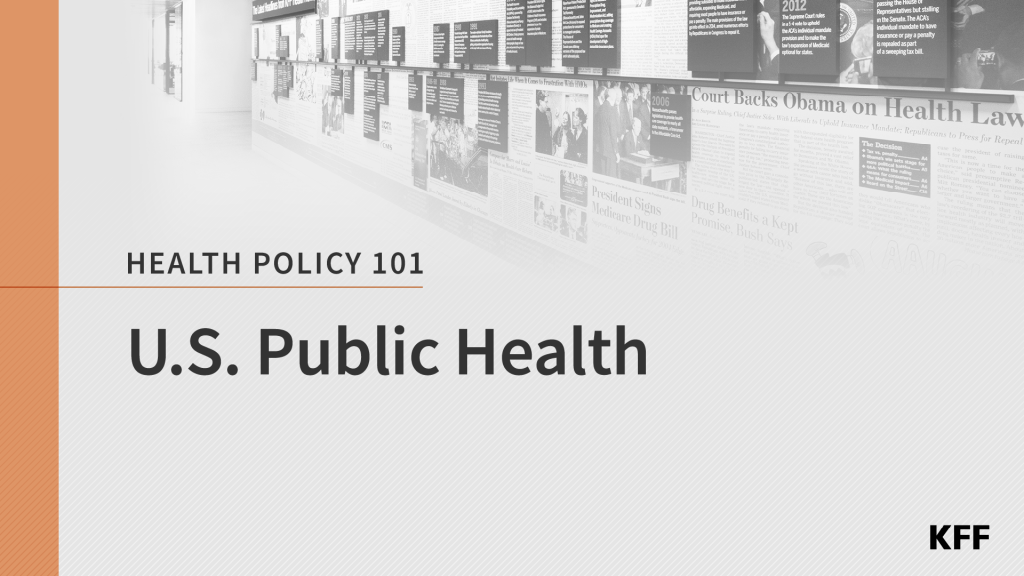What Does a Multi-Dose Series Mean for the COVID-19 Vaccination Effort?
This issue brief examines key issues related to multi-dose vaccination series generally as well as issues specific to COVID-19.
The independent source for health policy research, polling, and news.
KFF’s policy research provides facts and analysis on a wide range of policy issues and public programs.
KFF designs, conducts and analyzes original public opinion and survey research on Americans’ attitudes, knowledge, and experiences with the health care system to help amplify the public’s voice in major national debates.
KFF Health News is a national newsroom that produces in-depth journalism about health issues and is one of the organization’s core operating programs.
Health Policy 101 is a comprehensive guide covering fundamental aspects of U.S. health policy and programs, including Medicare, Medicaid, the Affordable Care Act, employer-sponsored insurance, the uninsured population, health care costs and affordability, women's health issues, and health care politics. The Public Health chapter examines how public health is governed and delivered in the United States. It includes explanations of key public health frameworks, services, capabilities and characteristics, how the public health system works in state, local and territorial governments, and public health funding, workforce, and communication challenges in an era of declining trust.
This issue brief examines key issues related to multi-dose vaccination series generally as well as issues specific to COVID-19.
Despite Optimism about COVID-19 Vaccines in the Future, Half Say They are Frustrated with the Current Situation and Nearly a Quarter are Angry While older Americans are a high-priority group for getting a COVID-19 vaccine, the latest KFF COVID-19 Vaccine Monitor report finds that, among those who have not yet been vaccinated, most people ages 65 and…
This KFF COVID-19 Vaccine Monitor report shows nearly half of the public now wants to get a vaccine as soon as possible, reflecting a rise in enthusiasm across racial and ethnic groups since December. It also examines information needs, worries about the vaccine, effective messages and views of vaccine distribution.
This analysis updates the approaches states are taking to manage the limited initial supply of COVID-19 vaccines based on revised federal guidance and balance the desire to vaccinate those at greatest risk first with the need to ensure a fast and effective statewide vaccination effort. It includes a state data table.
This analysis examines the different approaches states are taking to manage the limited initial supply of COVID-19 vaccines and balance the desire to vaccinate those at greatest risk first with the need to ensure a fast and effective statewide vaccination effort. It includes a state data table.
A new KFF analysis examines the different approaches states are taking to manage the limited initial supply of COVID-19 vaccines and balance the desire to vaccinate those at greatest risk first with the need to ensure a fast and effective statewide vaccination effort.
As the COVID-19 pandemic grows, the Centers for Disease Control and Prevention (CDC) and other public health officials recommend that people who are sick should stay home. Benefits such as sick leave and family leave can help employees follow these guidelines; however, the U.S. does not have national standards on paid family or sick leave. The lack of a national policy means some employees are forced to take unpaid leave, or come to work when they are ill, which could have public health consequences.
Approaching the end of 2020, two of the most pressing concerns facing the country are the long-standing issue of racial discrimination and the ongoing coronavirus pandemic. The issues have merged with the pandemic taking a disproportionate health and economic toll on people of color.
Encouraging reports about several COVID-19 vaccine candidates is raising hopes that there will soon be one or more vaccines proven safe and effective, starting a race to produce, distribute, and administer it to essential workers, people at high risk, and the public, including those who may start out with skepticism about the risks posed by…
More than 100,000 residents and staff have died in long-term care facilities since the start of the pandemic. This post discusses the implications of the likely rise in cases due to holiday gatherings and the share of total COVID-19 deaths that have happened in long-term care facilities.
© 2025 KFF
